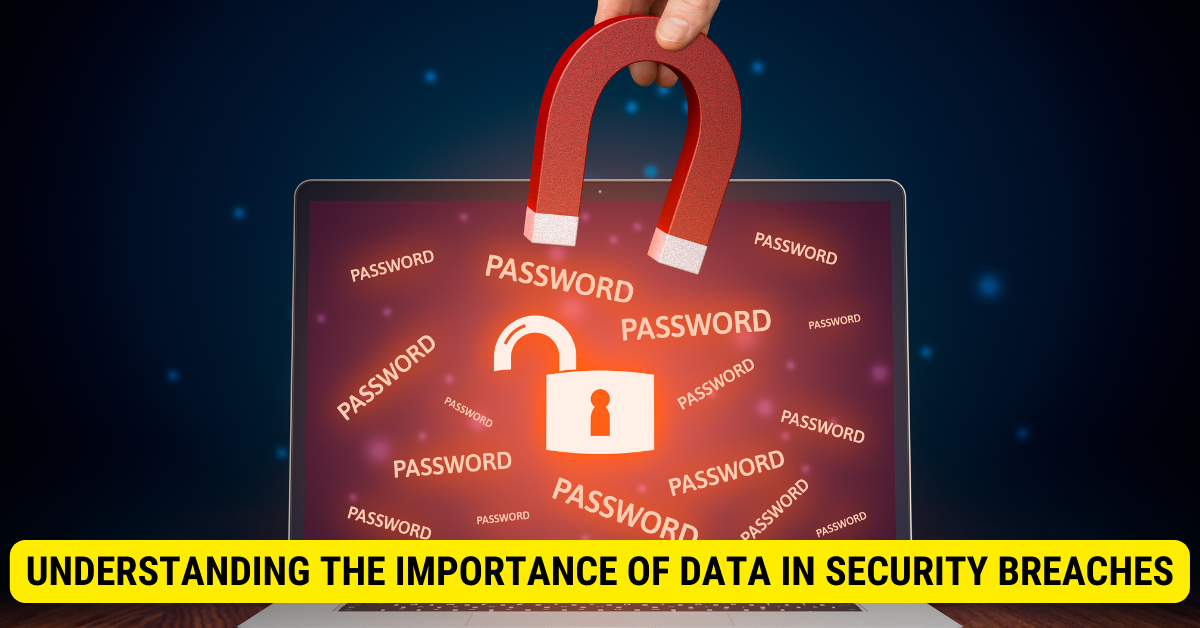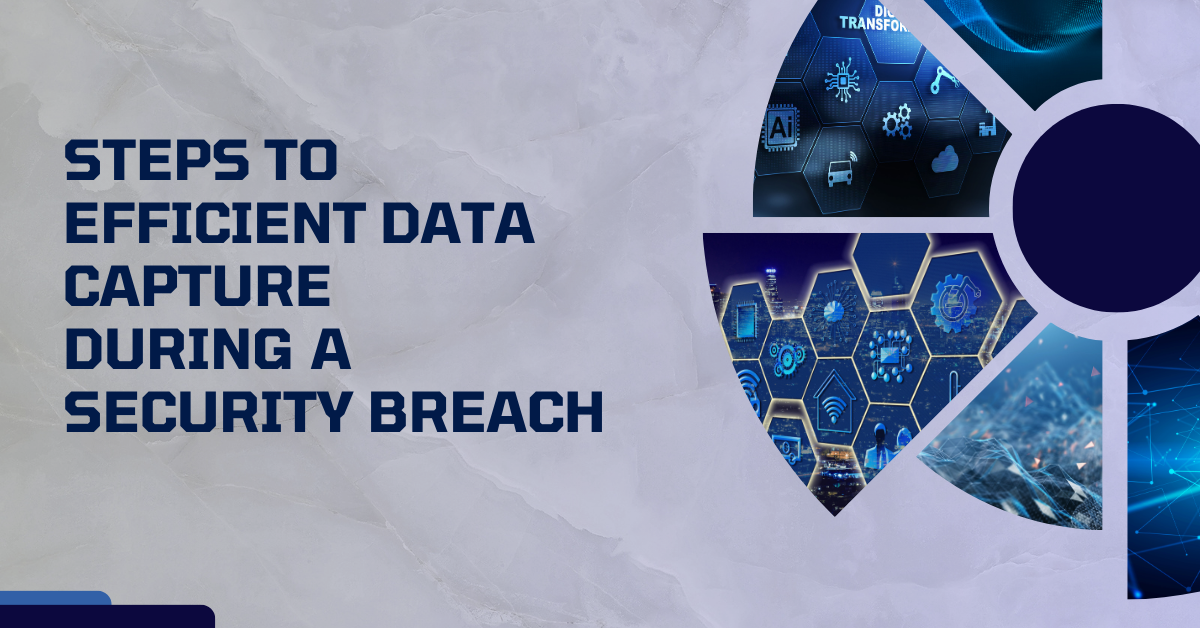When a security breach occurs, capturing logs, user activity, affected accounts or systems, IP addresses involved, and timestamps of suspicious activities is vital.
There is no denying the increasing threat of security breaches in today’s digital landscape. As organizations strive to protect their sensitive data from cybercriminals, it is crucial to understand what data to capture during a security breach. By capturing the right data, organizations can gain valuable insights into the breach and take appropriate actions to mitigate the impact. In this object, I will explore the status of data in security breaches, the types of data to capture, steps for efficient data capture, tools and techniques for effective data capture, and the significance of analyzing and interpreting captured data.
Understanding the Importance of Data in Security Breaches

Regarding security breaches, data is at the heart of the matter. The information compromised during a breach can range from personally identifiable information (PII) to sensitive corporate data. Organizations may struggle to respond effectively to security incidents without a comprehensive understanding of data’s role in cybersecurity.
In today’s digital age, data has become the lifeblood of any organization. It encompasses customer details, financial records, intellectual property, and more. This vast amount of data is what cybercriminals are after, constantly on the prowl, seeking to exploit vulnerabilities and gain illegal access to this valuable information.
By capturing relevant data during a breach, organizations can better assess the damage caused by the attack. They can analyze the compromised data to understand the extent of the breach and identify potential weaknesses in their security defenses. This information is crucial in formulating an effective response and implementing measures to prevent similar incidents in the future.
The Role of Data in Cybersecurity

Data serves as the foundation of cybersecurity efforts. It gives organizations valuable insights into cybercriminals’ tactics, techniques, and procedures. By analyzing the captured data, security teams can better understand the attack vectors employed, the vulnerabilities exploited, and the motives behind the breach.
Furthermore, data plays a critical role in threat intelligence. By aggregating and analyzing data from various sources, establishments can identify patterns and trends in cyber threats. This enables them to proactively enhance their security measures and stay one step ahead of potential attackers.
Why Accurate Data Capture Matters
Accurate data capture is paramount in the aftermath of a security breach. Without capturing the necessary data accurately, organizations risk overlooking critical details that could help investigate the breach or prevent future attacks.
For instance, accurate data capture enables organizations to identify the specific types of information compromised, such as credit card numbers, social security numbers, or intellectual property. This knowledge is essential for determining the potential impact of the breach and taking appropriate actions to mitigate the damage.
In addition to investigating the breach, accurate data capture enables organizations to adhere to legal and regulatory requirements. Many jurisdictions have data breach notification laws that mandate organizations to report incidents to authorities or notify affected individuals. Organizations may struggle to comply with these obligations without accurate data capture, leading to potential legal and reputational consequences.
Moreover, accurate data capture facilitates forensic analysis, allowing organizations to reconstruct the events leading up to the breach. This helps in classifying the incident’s root cause and implementing measures to avoid similar attacks in the future.
Types of Data to Capture During a Security Breach
When faced with a security breach, it is crucial to identify and capture the right types of data. Doing so gives organizations a holistic understanding of the breach, aiding in incident response, forensic analysis, and future preventive measures.
A security breach can severely penalize organizations, including financial losses, reputational damage, and legal liabilities. Therefore, it is essential to gather as much relevant data as possible to accurately assess the impact and scope of the breach.
Identifying Relevant Data
Every security breach is unique, but certain types of data are typically targeted by cybercriminals. This includes login credentials, payment card information, Social Security numbers, email addresses, and other sensitive personal information. It is essential to identify and capture these types of data to gauge the extent of the breach and take appropriate actions.
However, it is not just personal data that organizations should focus on. Other critical data that may be targeted during a breach include intellectual property, trade secrets, financial records, customer databases, and proprietary software. These data types are valuable assets for organizations, and their compromise can have long-lasting consequences.
Moreover, it is important to consider the context of the breach and the industry in which the organization operates. For example, healthcare organizations must pay special attention to protected health information (PHI) and electronic medical records (EMRs). At the same time, financial institutions must prioritize capturing banking transaction and account information data.
Data Points to Monitor Regularly
Proactively monitoring specific data points can help detect a security breach before it escalates. These may include abnormal login attempts, unauthorized system access, changes in user behavior, or suspicious network traffic. By regularly capturing and analyzing such data points, organizations can identify potential security threats and swiftly respond to them.
Organizations should also consider monitoring system logs, intrusion detection systems, and security event management tools. These sources can deliver valuable insights into the breach, such as the attack vector used, the duration of the breach, and the techniques employed by the attackers.
Furthermore, capturing network traffic data can be instrumental in understanding the scope of the breach. Analyzing network packets can reveal communication patterns between compromised systems, identify command and control servers, and help trace the attack’s origin.
It is worth noting that capturing and analyzing data during a security breach should be done in a controlled and secure environment. Organizations should follow best practices for digital forensics to ensure the integrity and admissibility of the captured data as evidence, especially if legal action is pursued.
In conclusion, capturing the right data types during a security breach is crucial for organizations to respond, investigate, and prevent future incidents effectively. Organizations can gain valuable insights into the breach, mitigate its impact, and strengthen their overall security posture by identifying relevant data and monitoring key data points.
Steps to Efficient Data Capture During a Security Breach

Organizations should follow a predetermined set of steps in a security breach to ensure efficient data capture. Acting promptly can minimize the breach’s impact and aid in swift recovery.
Immediate Actions to Take Post-Breach
Organizations should isolate affected systems to prevent further unauthorized access as soon as a breach is detected or suspected. It is crucial to create data backups, preserve log files and other valuable artifacts, and document the breach incident in detail. Capturing this data early on facilitates accurate analysis and aids in incident response.
Long-Term Strategies for Data Capture
Effective data capture extends beyond the immediate response to a breach. Organizations should consider implementing robust data logging mechanisms, deploying intrusion detection systems, and employing incident response teams to ensure continuous data capture. With these long-term strategies, organizations can proactively gather and analyze data to strengthen their cybersecurity posture.
Tools and Techniques for Effective Data Capture
Various tools and techniques can aid organizations in capturing data during a security breach. These tools automate data capture, streamline analysis processes, and enhance incident response capabilities.
Utilizing Data Capture Software
Data capture software offers a comprehensive solution for efficiently capturing and analyzing data during a breach. These advanced tools automate the collection of relevant data, perform real-time analysis, and generate reports to aid incident response. Organizations can save time and resources by utilizing data capture software while ensuring accurate data capture.
Manual Data Capture Methods
While data capture software can be invaluable, organizations should not overlook the importance of manual data capture methods. This includes preserving physical evidence, conducting interviews with affected individuals, and documenting the incident timeline. Combining manual and automated data capture methods provides a well-rounded approach to capturing critical data accurately.
Analyzing and Interpreting Captured Data
Collecting data is only the first step; analyzing and interpreting captured data is equally vital. This stage allows organizations to transform raw data into actionable insights, aiding in incident response, vulnerability identification, and future threat mitigation.
Understanding Data Analysis in Cybersecurity
Data analysis in cybersecurity involves processing captured data to identify patterns, anomalies, and potential threats. It includes techniques such as statistical analysis, machine learning algorithms, and data visualization. Organizations can make informed decisions based on their captured data by understanding data analysis methods.
Making Sense of Captured Data
The captured data holds valuable information, but it is essential to make sense of it. This involves correlating data points, identifying trends, and uncovering actionable intelligence. Organizations can optimize their incident response procedures and strengthen their overall security posture by making sense of the captured data.
Key Takeaways
- Timestamps help trace the timeline of the breach.
- Network logs can identify sources and patterns of unauthorized access.
- User activity data determines if any internal accounts were compromised.
- Details of affected systems help in assessing the damage.
- IP addresses can sometimes pinpoint the location of the attacker.
FAQs
How do I capture this data?
Deploy intrusion detection systems, use logging tools, and have monitoring systems in place.
What do I do after capturing the data?
Isolate affected systems, notify relevant stakeholders, and conduct a thorough investigation.
How long should I retain breach data?
Depending on jurisdiction and the nature of the data, retention laws vary. Consult legal counsel.
Should I notify affected users immediately?
In most jurisdictions, there’s a legal obligation to inform affected parties.
Can this data help prevent future breaches?
Analyzing breach data can reveal vulnerabilities and help improve security measures.
Conclusion
In conclusion, capturing the right data during a security breach is vital for organizations to effectively respond to incidents, mitigate the impact, and enhance their cybersecurity defenses. By understanding the importance of data, identifying the types of data to capture, following efficient data capture steps, utilizing appropriate tools and techniques, and analyzing captured data, organizations can better protect themselves from cyber threats and ensure the safety of their valuable information.
